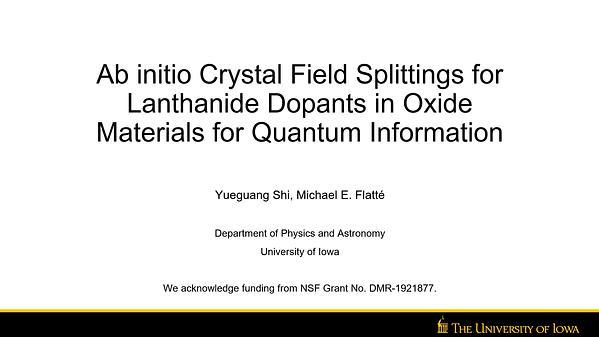Would you like to see your presentation here, made available to a global audience of researchers?
Add your own presentation or have us affordably record your next conference.
Mn3Pt is a non-collinear antiferromagnet with an fcc crystal structure and magnetic moments on the Mn atoms that are at an angle of 120° with respect to each other. This arrangement breaks the cubic symmetry and allows for the existence of the anomalous Hall effect. Here we measure an anomalous Hall effect in Mn3Pt thin films that is only present at temperatures below 270K. This can be explained by a transition from a collinear (above 270K) to a non-collinear (below 270K) antiferromagnetic phase, which is characterized by a sudden change in resistance of the film. Moreover, because of mirror symmetry breaking due to the magnetic structure, we expect to generate exotic spin-torques with a spin-polarization component along the out-of-plane direction, which is unlike the conventional in-plane spin polarization direction. This allows for efficient and deterministic switching of out-of-plane magnetized materials through spin-orbit torques. References
GB-04 (FOC-05)
High-throughput study of spin and orbital transport in magnetic materials
Yuta Yahagi1, 2, Jakub Zelezny3
1Applied Physics, Tohoku University, Sendai, Miyagi, Japan, 2NEC-AIST Quantum Technology Cooperative Research Laboratory, NEC Corporation, Tsukuba, Ibaraki, Japan, 3Institute of Physics, Czech Academy of Science, Prague, Czechia
Abstract Body We study the spin Hall effect (SHE) and the orbital Hall effect (OHE) in magnetic materials using automatic high-throughput calculation scheme. The SHE is a phenomenon in which an applied electric field induces a spin current. This effect plays a key role in various spintronics devices. Although the SHE has been researched mainly in nonmagnetic materials, SHE in magnetic materials has gained a considerable attention recently as they can exhibit a large SHE1. The OHE, a phenomenon in which electric field generates a flow of orbital angular momentum, has also been attracting attention as a new driving mechanism of devices 2. For future application, exploring materials with large SHE or OHE is demanded.
In this study, we perform a systematic evaluation of the spin Hall conductivity (SHC) and the orbital Hall conductivity (OHC) of select materials from MAGNDATA3, a database of magnetic materials. We target collinear materials both ferromagnets and antiferromagnets, and evaluate their intrinsic contributions of SHC and OHC based on Kubo-formula.
Figure 1 shows the results of SHC and OHC of 84 materials. The OHCs in most materials are nearly ten times larger than the SHCs. Interestingly, the Mn3Pt has a colossal OHC reaching about 14000 (hbar/e)S/cm, which is higher than either OHC of Mn (~10000) and Pt (~2000) 4, suggesting the importance of the material structure. Further analysis of both theoretical aspect and data science will be presented at the conference.
References 1 C. Qin, et al., Phys. Rev. B 96, 134418 (2017); Y. Zhang et al., New J. Phys. 20, 7 (2018).
2 H. Kontani, et al., J. Phys. Soc. Jpn., 76, 103702 (2007).
3 S.V. Gallego et al., J. Appl. Crystallogr. 49, 1750 (2016).
4 D. Jo, D. Go, and H-W. Lee, Phys. Rev. B 98, 214405 (2018).

